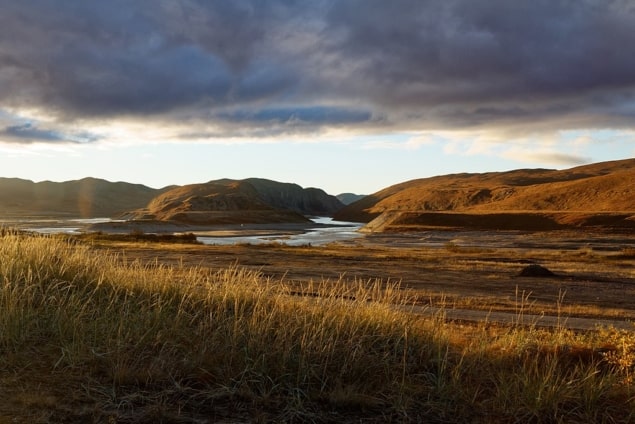
- This story is part of Covering Climate Now, a global collaboration of more than 250 news outlets to strengthen coverage of the climate story.
An international team has discovered a host of signals in West Greenland – including ice out date and changes in plant growth – that indicate the region’s environment responds abruptly to changes in climate.
The observations appear to undermine climate adaptation strategies, which rely on there being a time lag between changes in the climate and the resulting changes in the environment.
“We are seeing fast shifts in ecosystem responses,” says Jasmine Saros at the University of Maine, US. “This makes it an even greater challenge to know how to anticipate and avoid [them].”
The Arctic is the most rapidly warming region of the planet and has a big influence on many climatic and environmental processes elsewhere. Over the past 150 years, the Arctic has warmed between two and three times faster than the global average.

Clouding over: the clouds that defy climate models
In Greenland between 2007 and 2012, mean annual air temperatures were 3 °C higher than in the two decades up to 2000. Meanwhile, the area of Kangerlussuaq, West Greenland, exhibited no warming for most of the 20th century then suddenly started warming after the mid-1990s.
Saros and colleagues took Kangerlussuaq as an ideal place to quantify the ecological effects of very rapid warming. They analysed monitoring data and environmental “archives” such as lake sediment cores and shrub rings for the past 40 years. In the latter half of this period there were two jumps in the data: from 1994, mean June air temperatures rose 2.2 °C while mean winter rainfall doubled; then from 2006, mean July air temperatures rose 1.1 °C.
Both these climate jumps saw concurrent or only slightly delayed environmental responses. For instance, in the 1990s the seasonal loss of lake ice shifted six days earlier, and the date by which half of all plant species had come into growth moved 10 days earlier. In the early 2000s, this initiation of plant growth shifted another 13 days earlier, while discharge from the Greenland Ice Sheet rose 50%.
A little later, lakes became clearer and warmer, which the researchers believe will have driven a rise in bottom-dwelling algae. “That shift is important because it can change the nutrient and carbon cycle in lakes, and ultimately across the landscape,” says Saros.
“We were surprised because previous research typically revealed that ecosystem responses to rapid climate change are often delayed or dampened by dynamics and interactions within ecosystems,” says Saros. “In this case, however, we found that Arctic systems responded simultaneously with, or shortly after, these climate shifts.”
Saros believes that shorter growing seasons, simpler ecosystems and lower biodiversity could all contribute to the sensitivity of Arctic ecosystems to rapid climate change.
“Our results have implications for sea level rise, ocean salinity, and carbon cycling – all environmental changes with far reaching consequences,” she says.
The team reported the findings in Environmental Research Letters (ERL).



